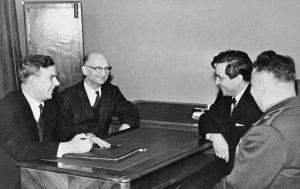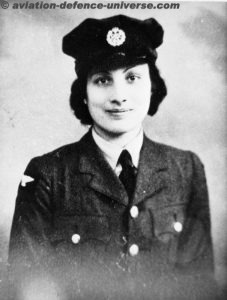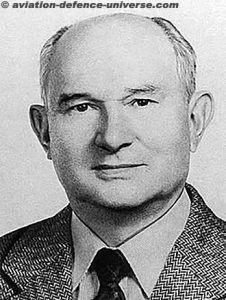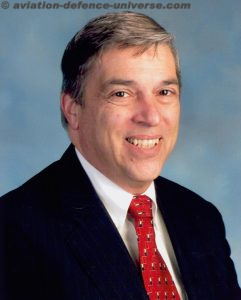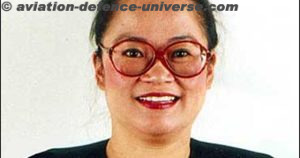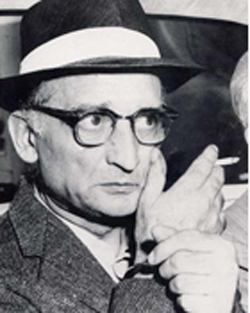
By Jai Kumar Verma
New Delhi. 20 January 2022. In June 2010 when ten Russian spies, who were living in U.S. as deep cover agents, were caught, the press recapped the case of Colonel Abel, who was caught more than fifty years back.

Colonel Rudolf Abel was not only the top most Soviet spy apprehended in United States but he was also one of the most notorious spy of the cold war era. The able Colonel Abel was arrested in October 1957 by Federal Bureau of Investigation (FBI), which is the domestic intelligence and security service and principal federal law enforcement agency of the country. His arrest was a classic case of cold war when the cover of an undercover agent was blown by his own junior. The U.S. court sentenced him, 30 years of imprisonment but he remained in prison just little more than four years. He was exchanged for Francis Gary Powers who was the pilot of U-2 plane which was shot down by USSR in 1960.
Colonel Abel was the highest-ranking Russian who was arrested and sentenced for the espionage in U.S. Abel was a dedicated Communist like his father and joined Russian army as a radio operator. He took active part in intelligence operations against Germans in World War II. After the war he joined KGB and was sent to U.S. as Deep Cover Agent. He was selected as deep cover agent, as he was born on 11 July 1903 in North Of England (United Kingdom) to Russian parents who were residing in U.K. as refugees. His real name was William August Fisher and his parents were Heinrich and Lyubov Fisher who were revolutionaries of the Tsarist era. Not only this his father was German while mother was a Russian. His father was a revolutionary and worked with Vladimir Lenin, hence in 1896 Abel’s (Though the real name of Abel was William August Fisher but for the article we will continue with his name as Abel) father was arrested and sentenced to three years internal exile and was compelled to migrate to U.K. in 1901. In U.K. as a devout communist, he was involved in sending arms and ammunition to Baltic countries. Abel was intelligent and won scholarships in his educational career. After Russian Revolution in 1921, he along with his family returned to Moscow.
Besides Abel’s family background he was also fluent in English, German, Polish, Yiddish, and Russian languages. Hence, he was an ideal person for deep cover agent. After serving in Red Army, he joined OGPU (predecessor of KGB) in 1927 and served as Radio Operator in Norway, Turkey, United Kingdom and France. After return from foreign assignments in 1936 he was made head of the unit which was training radio operators for illegal assignments.
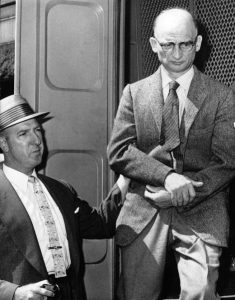
Although he was not punished in ‘Great Purge’, even though his brother-in-law was a Trotskyist, hence opposed to Stalin but he was terminated from service in 1934 but again recalled during World War II to train radio operators for covert work against Germans. He also participated in an important Operation Scherhorn very successfully and because of his good work he was given the posting of U.S. as a Deep Cover Agent.
Abel was given extensive training and more or less a fool proof cover story. First, he was given a short-term cover and then a deep cover. His deep cover was like a skin of an onion, layer after layer which was difficult for the counter-intelligence agencies to detect and blast the cover.
In 1948, Abel travelled to Warsaw on Soviet passport and from Warsaw he travelled on U.S. passport as Andrew Kayotis. From Warsaw first he went to Czechoslovakia then to Switzerland and to Paris. Andrew was a Lithuanian born U.S. citizen who went to Soviet Union and died. However, Soviets kept his passport, which was later used by Abel, who entered in U.S. from Montreal in November 1948.
In November a Soviet support agent namely Josef Romvoldovich Grigulevich met him and gave him a genuine birth certificate and few forged documents on the name of Emil Robert Goldfus and $ 1000/. Josef took the passport and other documents pertaining to Kayotis from Abel. Now Abel’s new identity was of Goldfus and had no documents of Kayotis, which was his previous identity. The original Goldfus expired about 14 moths back and Soviet Intelligence agency kept his documents for future use in operations.
Abel met KGB officer posted in Soviet Consulate in U.S. in July 1949 and got money from him. Once Abel received the money, he was instructed to revive the network of agents as they were supplying information about atomic secrets. He contacted Lona Cohen (code name Lesle), and her husband Morris Cohen (code name Luis) and Theodore Ted Hall (code name MLAD). Mlad was supplying information pertaining to atomic secrets while Lesle and Luis were the couriers. Later other agents including Aden, Serb, Hall, and Silver also joined the network which was known as “Volunteer network”. Abel was collecting secret documents either in third countries or through DLBs or couriers. His meetings with agents were as less as feasible.
Besides collecting classified information, he was also transmitting secret information to USSR through high powered radios. As he supplied important information, he was awarded Order of the Red Banner a significant Soviet medal which was given to military personnel. Abel volunteered to come to U.S. as an agent without diplomatic immunity, it indicates his patriotism and devotion to intelligence work.
In 1950 Julius and Ethel Rosenberg were caught. Their courier was Lona Cohen hence it was expected that Abel may also be caught. However, the FBI could not break Rosenberg hence Abel and his network remained safe. It also indicates professionalism of Abel as he was adhering to the security norms.
Abel as a ‘Principal Agent’ expanded his network and needed some assistance hence in 1952 KGB sent Reino Hayhanen (Code name VIK). He came to U.S. after assuming the identity of Eugene Nikolai Maki. His father and mother both were US citizens and they migrated to Estonia in 1927. Hayhanen reached Finland in 1949, obtained original birth certificate of Maki and lived three years in Finland to strengthen his cover of Maki. Hayhanen spent two years in New York to establish his identity as Maki, he was paid by KGB through DLB (Dead Letter Box).
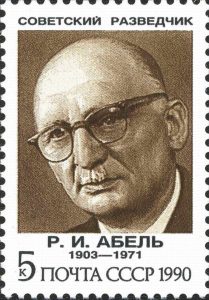
Hayhanen was a heavy drinker and was fighting with his wife Hannah. No body contacted him for six months however in the DLB he found a hollowed-out nickel which he lost before he could have opened it. Loosing anything like this by intelligence officer or an agent is like committing suicide. As intelligence is battle of wits where there is not a second chance. However, the hollow nickel moved to several persons but remained unopened. After about seven months it reached to FBI, but they also could not decipher the microphotograph, which contained a coded message. It reveals that the KGB was taking full precautions with the operations connected with Abel.
In 1953, Abel opened a studio and rented a room in a boarding house in Brooklyn. As he took the cover of a photographer hence his irregular working hours, going out and meeting people raised no suspicion. Here he developed friendship with artists but allowed only one friend to come to his studio.
Hayhanen started working with him in 1954 and had to collect and put the reports in DLBs but he missed it several times. Abel was unhappy because of heavy drinking of Hayhanen and his casual approach towards the intelligence work. Both Abel and Hayhanen had gone to Bear Mountain Park and concealed $5,000 which had to be given to the wife of Soviet spy Morton Sobell who was undergoing a thirty years jail term.
Abel also realised, when he returned to New York in 1956 that Hayhanen was not clearing the DLBs and the network which he created was shattered in his absence. The money which Hayhanen received from KGB to run the network was spent by him in alcohol and prostitutes. Abel understood that Hayhanen was a wrong choice and he reported the matter to Moscow. The KGB headquarters also realised that Hayhanen was not fit for the clandestine job and he would smash the whole network carefully created by Abel.
Hence in 1957 Hayhanen received a message that he was promoted to the rank of Lieutenant Colonel and he was also granted leave to visit Soviet Union. Nonetheless Hayhanen understood that it was a trap and if he returned back to Soviet Union he would be punished and may be killed. Hence, he not only delayed his departure but told Abel that he is under surveillance of FBI. When Abel told him to leave U.S. urgently, he went to Bear Mountain Park recovered $5,000 and went to Paris. In May 1957 he telephoned and then went to U.S. Embassy in Paris. He told to U.S. Embassy official that he was a Soviet Intelligence Officer and was working in U.S.A from last five years. But now he was recalled to Moscow and he is afraid that he would be punished, hence he want to defect. Hayhanen also gave a hollow Finnish 5-mark coin to C.I.A. official to show his credibility. He was drunk when he entered U.S. Embassy and met Embassy official. The hollow coin had a microfilm.
Hayhanen was sent to U.S. after FBI checked his story. He cooperated with FBI and besides others he also gave the code name and detailed description of Abel. He also disclosed the location of studio and address of the residence of Abel and told that he was his senior. Hayhanen disclosed that he and Abel were meeting at crowded places and only when it was very necessary. They were exchanging messages and reports through DLBs. He disclosed the locations of all the DLBs. The hollow articles like pen, screws, coins batteries etc. were also used to send reports and messages.
However, the KGB was able to know about the disappearance of Hayhanen quite late but when came to know it instructed Abel to leave U.S. urgently. But it was difficult as Hayhanen disclosed about all the identities of Abel. KGB’s Ottawa office tried to procure two passports as well as Canadian Communist Party also procured a new passport on the name of Robert Callan but before Abel could get these passports he was arrested by the FBI. Before arrest Abel remained under tight surveillance but as Abel was a trained intelligence Officer, he detected the surveillance but could not leave the country as he had no valid passport.
FBI also took the photograph of Abel and showed it to Hayhanen and once he confirmed, Abel was arrested on 21 June 1957 from his residence. Before his arrest Abel made up his mind that he would not turn a traitor as he had faith in KGB and he loved his wife Elena Lebedeva and daughter Evelyn. He had confidence that KGB would take him out from the prison.
Before his arrest FBI officer addressed him as colonel to show that his cover has blown and told that they have information that he was involved in espionage activities. FBI also offered him to cooperate but Abel refused. Once he refused to cooperate FBI called officials of Immigration and Naturalisation Service (INS) and Abel was arrested. He was arrested through INS as FBI wanted to keep Abel as long as possible so that they can persuade him to work as double agent. But when he refused to betray, he was charged for espionage.
Abel was taken to Federal Alien Detention Facility in McAllen, Texas where he was kept for six weeks. During interrogation he told that he was a Soviet citizen and his name was Rudolf Ivanovich Abel, he took this name as real Abel was a colonel in KGB who expired sometime back. He took the name of Col Abel as he knew that once it will be published in newspapers that Colonel Abel a soviet spy was apprehended, the KGB would know that he was arrested.
FBI searched his residence and studio and found incriminating material including cipher pads, cameras, and films to produce microdots, hollow shaving brush and several other material.
He was tried as a Russian spy hence lawyers of Brooklyn Bar Association refused to take his case. After great effort James B Donovan accepted to contest his case. Hayhanen, his former assistant testified against Abel in the court and court found him guilty and announced a total of 30 years imprisonment.
Abel’s faith in KGB had not gone waste and on 10 February 1962 he was exchanged with Francis Gary Powers who was the pilot of U 2 Plane shot down by USSR. He remained in U.S. prison little more than four years. Once he reached home, he met his wife and daughter.
KGB extolled his achievement of working as an under-cover agent for nine years in U.S. KGB employed him and utilised his services for delivering speeches and lectures to students about the intelligence activities. He also appeared in a Soviet spy movie namely “Dead Season” and also worked as consultant in the movie. He was a chain smoker and died because of lung cancer on 15 November 1971. He was buried in his real name and it was mentioned that he was the spy who never “broke”.
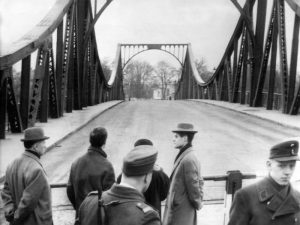
As a principal agent Colonel Abel created a network in U.S. and stayed there for nine years as an under-cover agent. He was caught because his assistant who was sent from Moscow was an alcoholic, careless and work shirker. Later he defected and exposed Abel. The FBI allured Abel to cooperate but he as a true patriot and intelligence officer had not lost faith in his parent organisation and not disclosed the names of his contacts. In this way he saved the lives of several KGB agents. As FBI wanted to convert Abel into double agent his arrest was kept secret, no legal assistance was provided and there was no press coverage about his arrest. Just within five hours of his arrest Abel was secretly taken to a federal detention centre in McAllen Texas. There he was kept for about seven weeks and during interrogation FBI attempted to convert him into double agent and also tried to obtain information about Soviet intelligence network, Stalin’s misdeeds etc. As his assistant Hayhanen already defected FBI miscalculated that Abel would also agree to work for them but Abel was one of the most professional spy and chalked out his line of action before his arrest. Once FBI was convinced that Abel would not work as double agent he was taken back to New York and charged for capital charges of military and atomic espionage.
Besides “Dead Season” other films and documentaries including “Unknown Abel”, “The US Government against Rudolf Abel”, “Bridge of Spies” were made. In 1990 USSR released a stamp portraying Rudolf Abel. The importance of Abel’s case can be adjudged by the fact that CIA considered to publish a report after two years of exchange of Abel. The secret report was written on Abel and put up in his file.
Nonetheless after return from U.S., Abel was compulsorily retired from KGB as it was suspected that American might have won over and he may work as a double agent. He was given a modest pension and was allowed to publish his memoirs after approval from KGB in 1968. On KGB behest he delivered lectures to intelligence officers and narrated his experiences. He died in 1971 and his remains were buried at Donskoy Monastery and his tombstone carried his real name i.e. William August Fisher.
A lesson learnt from this case is that the spies work under great pressure as they live a dual life, which is always very complicated and strenuous. Hence large number of spies are drunkards as alcohol lessens stress. It also reduces fears and divert the mind from troubles. Sometimes it makes you bold and courageous. In this case Hayhanen went to U.S. Embassy in Paris when he was drunk. However heavy drinking is harmful for health as well as mind and too much alcohol can lead to blackouts, excessive expenditure and one may indulge in other vices. Hence intelligence agencies should keep a watch so their agents and officials do not indulge in excessive drinking. Hayhanen because of his heavy drinking took the work casually and later he exposed the whole operation.
(Jai Kumar Verma is a Delhi-based strategic analyst and member of United Services Institute of India and Institute for Defence Studies and Analyses. The views in the article are solely the author’s. He can be contacted at editor.adu@gmail.com)






































